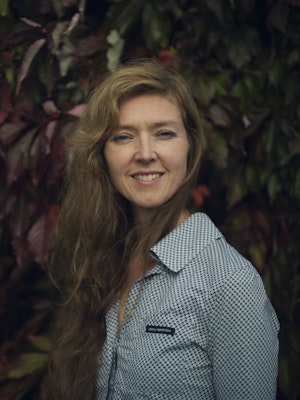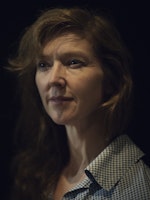“Ever since I was little I have wanted to make music,” says Natasha Barrett, who grew up in Gloucestershire in western England, studied music in Birmingham, and earned a doctorate in electroacoustic music in London before settling in Norway in 1999. She has received numerous awards for her music. The most well known of these for the Norwegian public are the Nordic Council Music Prize (2006) and the Edvard Prize (2004), but she has also received prizes from Germany, France, Italy, Austria, the Czech Republic, Spain and Brazil. For the past two years she has been engaged by the University of Oslo as a researcher at the Department of Musicology, where she has worked with the movement of sound and how we perceive it in a 3D landscape.
One dream of many
When Barrett began to study music it was not in order to become a composer. “It was more a kind of dream. How could it be possible to make a living as a composer? It was only one of many dreams.”
Her principal instrument was classical guitar, and her second instrument was cello. When she began to compose, it was for ordinary acoustic instruments.
“I had quite a good aural idea, or perceptional idea, of what I was doing on a written score. But I found it difficult to find my own expression. In my purely instrumental work, I was writing clichés and pastiches. I didn’t discover anything original.”
When she was introduced to electronic sounds while studying for her bachelor’s degree, she found that they opened up entirely new opportunities to express herself. She decided to pursue a master’s degree in electroacoustic composition and analysis technique, and went on to earn a doctorate from City University in London. This is a relatively new area of music history, although this was not a factor in Barrett’s interest in the field.
“Electroacoustic music has been composed since the 1950s, and this was the 1990s. So I wouldn’t consider it as having been that new. The traditions and the genre were already well established. It provided a basis that I could use to build on and develop.”
Building up the sound material
However, this was relatively early in the history of electroacoustic music, and everyone who was involved tells the same story of how primitive it was, with its magnetic tape, cutting and pasting, physical loops and time-consuming editing. It was through this laborious process that Barrett discovered the pleasure of exploring and shaping her own sound material. She compares it with an orchestra:
“An orchestra is something given, your instruments are given to you. They exist. In electroacoustic music, you have to invent your instruments and sounds, and then build music out of them. That is why I still work with computers, so I can invent sound. I work with live sound processing from acoustic sources because with a performer on stage, with a microphone and live processing, I can invent something as an extension of that instrument in real time. Any object that creates sound can become an instrument, and the manner in which sound is articulated and rendered becomes important.”
Why is this interesting?
“Because performers using acoustic sound sources bring something to a piece of music that can be quite difficult to supply in any other way: everything associated with the performer’s gestures, timing, articulation, dynamics. Capturing that without a human there is very difficult. It can make my life easier to draw on this skilled human, and what he or she can do with their instrument.”
In order to recapture the human factor amidst all of the technology?
“Yes, perhaps in order to preserve some human elements in a sound recording that will be used in one’s abstract electroacoustic works. It’s much easier to say: let me write a score for performers, and then they will bring it to life. In electroacoustic music we must compose the human expression. In practice, it is an extremely painstaking process, which is unfortunately becoming less prominent in much of today’s electroacoustic music. This is something that I intend to focus on in my teaching in order to ensure that the composition process functions well.”
Electroacoustic music as an academic subject
Natasha Barrett has been engaged as Associate Professor in electroacoustic composition at the Norwegian Academy of Music. She will develop a field that will encompass all types of electroacoustic music, including certain aspects of sound art and installation art in which composition is the primary element of the piece. She will offer a course in the analysis of electroacoustic music in order to train composers in listening and analysing existing works, as well as a module in music history. But programming will not be part of it, according to Barrett.
“I don’t see programming as a significant element in composing electroacoustic music. Knowledge of programming can be useful in solving a problem, but there are many ways of solving a problem.”


